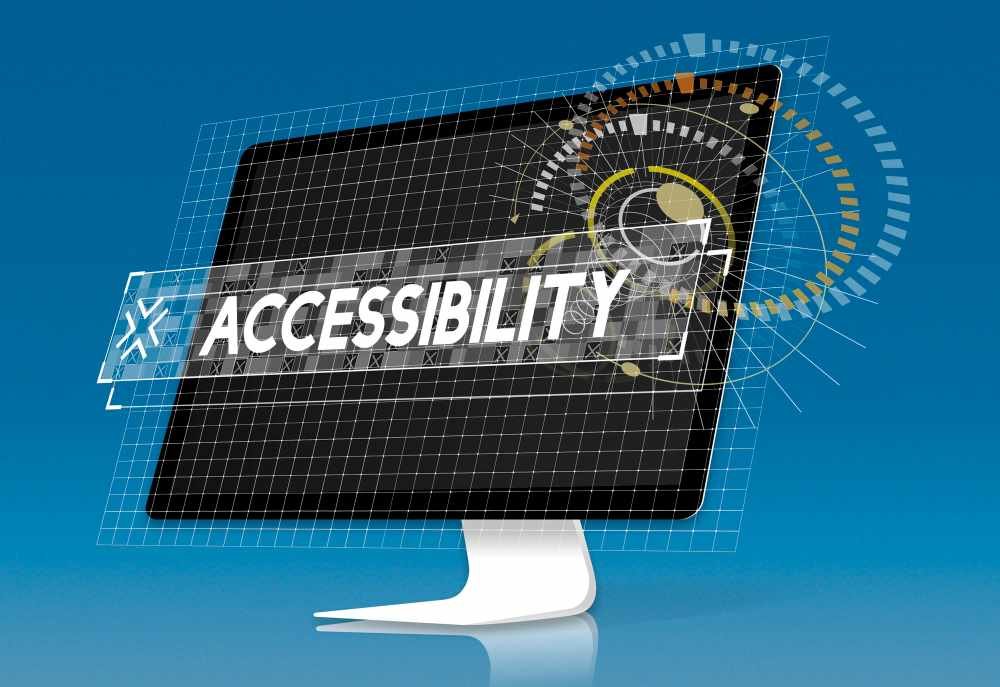Website Accessibility Best Practices: In-Depth Guidelines for Ensuring Inclusivity
In today’s world, having a website that’s accessible to everyone isn’t just about following laws—it’s about doing the right thing. Making sure your website works well for people with disabilities can greatly benefit your small business.
What is Website Accessibility?
Website accessibility means designing your website so that everyone, including people with disabilities, can use it easily. This includes people who are blind, deaf, or have other physical or cognitive challenges.
Why Should You Care?
- Legal Requirements: Laws require websites to be accessible. If your website isn’t, you might face legal issues.
- Moral Responsibility: It’s simply the right thing to do. Everyone deserves equal access to information and services.
- Business Benefits: An accessible website can attract more customers, improve your online presence, and enhance your brand reputation.
How Can This Help Your Business?
- Reach More Customers: By making your website accessible, you open the doors to a larger audience, including people with disabilities.
- Improve SEO: Accessible websites tend to rank better on search engines, making it easier for new customers to find you.
- Enhance User Experience: A well-designed, accessible website is easier for everyone to use, which can lead to more sales and satisfied customers.
This guide will show you the best ways to make your website accessible. We’ll provide clear steps and real examples to help you succeed. By following these tips, your small business can thrive in the digital age.
Why Website Accessibility Matters

The Big Picture
There are over 1 billion people worldwide who have some form of disability. That’s a huge number! If your website isn’t accessible, you could be missing out on a lot of potential customers.
Key Reasons to Care About Accessibility
- Reach More Customers:
- Making your website accessible means more people can use it. This includes those with disabilities who might otherwise be unable to interact with your business online.
- Example: If someone who is blind visits your site, having text descriptions for images can help them understand your content.
- Improve Search Engine Rankings (SEO):
- Accessible websites often perform better in search engine rankings. This means your website is more likely to appear at the top of search results, making it easier for new customers to find you.
- Example: Google and other search engines favor websites that are user-friendly and accessible.
- Enhance User Experience for Everyone:
- An accessible website is easier for all users to navigate and use. This leads to a better overall experience, which can result in more satisfied customers and increased sales.
- Example: Clear navigation and well-organized content help everyone find what they’re looking for quickly and easily.
By making your website accessible, you are not only doing the right thing but also opening up your business to a larger audience and improving your chances of success.
Understanding Web Content Accessibility Guidelines (WCAG)

The Basics of WCAG
The Web Content Accessibility Guidelines (WCAG) are a set of rules to help make websites accessible to everyone, including people with disabilities. These guidelines are essential for creating a website that is user-friendly and legally compliant.
Shocking Fact
Did you know that 97% of the top one million websites fail to meet WCAG standards? This means most websites are not fully accessible to people with disabilities, potentially missing out on a large audience.
The Four Key Principles of WCAG (POUR)
- Perceivable:
- Your website’s information must be easy to see or hear.
- Example: Use text alternatives for images so that screen readers can describe them to visually impaired users.
- Operable:
- Your website must be easy to navigate and use.
- Example: Ensure all functions are accessible via keyboard for those who can’t use a mouse.
- Understandable:
- Your content must be easy to read and understand.
- Example: Use simple language and clear instructions.
- Robust:
- Your website must work well with different devices and assistive technologies.
- Example: Properly code your website to ensure it’s compatible with current and future tools used by people with disabilities.
By following these four principles, you can make your website more accessible, ensuring it reaches and serves a wider audience effectively.
Perceivable Content: Making Information Visible

What is Perceivable Content?
Perceivable content means that all the information on your website should be easily seen or heard by everyone, including people with disabilities. This is especially important for content that isn’t text, like images and videos.
How to Make Non-Text Content Perceivable
- Text Alternatives for Images (Alt Text):
- Every image on your website should have a text description. This text, known as “alt text,” helps screen readers describe the image to visually impaired users.
- Example: If you have a picture of a red bicycle on your site, the alt text could be “A red bicycle parked by a tree.”
- Transcripts for Videos:
- Provide written transcripts for all videos on your site. This helps people who are deaf or hard of hearing understand the video content.
- Example: If you have a promotional video, include a text document that captures all the spoken words and sounds.
Real-Life Example: Shopify
Shopify, a popular e-commerce platform, uses descriptive alt text for their images. This makes the images accessible to screen readers, allowing visually impaired users to understand the visual content. For instance, a product image on Shopify might have alt text like “Black leather wallet with multiple card slots.”
By ensuring that all your non-text content has text alternatives, you make your website more inclusive and accessible to everyone. This not only helps your customers but also improves your website’s performance and reach.
Operable Interface: Ensuring Usability

What is an Operable Interface?
An operable interface means that all the features and functions of your website can be easily used by everyone, including those who cannot use a mouse. This is especially important for people with physical disabilities who rely on keyboards or other assistive devices.
How to Make Your Site Operable
- Keyboard Accessibility:
- Ensure all parts of your website can be navigated and used with a keyboard alone. This includes being able to move through menus, fill out forms, and interact with all buttons and links.
- Example: A user should be able to press the “Tab” key to move from one link to another and use the “Enter” key to select an option.
Real-Life Example: The BBC Website
The BBC website is a great example of how to implement an operable interface. It allows users to navigate through the site using keyboard shortcuts. This means users can move around the site, access content, and use all its features without ever needing a mouse.
By making your website fully usable with a keyboard, you ensure that all users, including those with disabilities, can interact with your site easily. This improves the overall user experience and helps you reach a wider audience.
Understandable Information: Simplifying User Interaction

What is Understandable Information?
Understandable information means that the content on your website should be easy to read and comprehend. This ensures that all users, regardless of their background or abilities, can understand and interact with your site.
How to Make Your Content Understandable
- Use Clear and Simple Language:
- Avoid using complex words or technical jargon. Use plain language that everyone can understand.
- Example: Instead of saying “utilize,” just say “use.”
- Provide Clear Instructions:
- Give clear and concise instructions for how to use features on your site. This includes filling out forms, navigating pages, and using interactive elements.
- Example: If users need to create an account, provide step-by-step instructions like “Enter your email address, choose a password, and click ‘Sign Up’.”
- Write Easy-to-Understand Error Messages:
- When something goes wrong, make sure your error messages are straightforward and helpful. Tell users exactly what went wrong and how they can fix it.
- Example: Instead of saying “Invalid input,” say “Please enter a valid email address.”
Real-Life Example: Gov.uk
The Gov.uk website is an excellent example of making information understandable. The site uses plain English and avoids complicated terms, making it easy for everyone to understand. Additionally, it provides detailed, step-by-step instructions for various processes, such as applying for a passport or paying taxes.
By keeping your content clear and simple, you make your website more user-friendly. This helps ensure that all visitors can easily understand and navigate your site, leading to a better overall experience.
Robust Content: Future-Proofing Your Website

What is Robust Content?
Robust content means that your website works well with current and future technology. This ensures that all users, including those with disabilities, can access and use your site regardless of the tools they use.
How to Make Your Content Robust
- Use Proper HTML:
- HTML is the coding language used to create websites. Using clean, correct HTML ensures that your site is easy for browsers and assistive technologies to read and display.
- Example: Properly using HTML tags like <header>, <footer>, and <nav> helps organize your content in a way that makes sense to both users and technology.
- Implement ARIA Tags:
- ARIA (Accessible Rich Internet Applications) tags help improve accessibility by providing additional information about elements on your site. These tags are especially useful for users who rely on screen readers.
- Example: Using ARIA tags can help describe what a button does or provide more context for dynamic content like pop-up windows.
Real-Life Example: Apple’s Website
Apple’s website is an excellent example of using robust content standards. They use proper HTML and ARIA tags, ensuring their site is accessible and compatible with various devices and assistive technologies. This means that whether you’re using a computer, tablet, or screen reader, Apple’s website will work seamlessly.
By making your website robust, you ensure it will continue to work well as technology evolves. This future-proofs your site, making it accessible to all users now and in the future. This helps provide a consistent and positive user experience, attracting and retaining more visitors.
The Business Case for Accessibility

Why Accessibility Matters for Your Business
Making your website accessible isn’t just about doing the right thing—it’s also great for your business. Here’s why:
Shocking Fact
Businesses that make accessibility a priority see a 10% increase in customer satisfaction. This means customers are happier and more likely to stay loyal to your brand.
Benefits for Small Businesses
- Higher Customer Retention:
- When your website is accessible, more people can use it easily, including those with disabilities. This leads to happier customers who are more likely to keep coming back.
- Example: A customer who uses a screen reader can navigate your site smoothly and complete purchases, leading to repeat business.
- Increased Sales:
- An accessible website opens up your business to a larger audience. More people can shop or use your services, which means more sales.
- Example: If your website is easy to use for everyone, including those with visual or motor impairments, you’re likely to see an increase in online orders.
- Enhanced Brand Reputation:
- Being known as a business that cares about accessibility can boost your brand’s image. People appreciate companies that are inclusive and socially responsible.
- Example: When customers see that you’ve taken steps to make your site accessible, they’re more likely to view your business positively and recommend it to others.
- Broadened Market Reach:
- An accessible website allows you to reach a wider audience, including people with disabilities who might otherwise be unable to use your site.
- Example: By ensuring your website is navigable by keyboard, you make it usable for people with mobility impairments, thus broadening your customer base.
By prioritizing accessibility, you not only comply with legal requirements but also tap into a vast market of potential customers. This leads to increased satisfaction, higher sales, and a stronger brand—key factors for the success of your small business.
Legal Implications of Website Accessibility

Why Legal Compliance is Crucial
Making your website accessible isn’t just a good business practice—it’s also a legal requirement. Ignoring accessibility can lead to serious legal consequences.
Shocking Fact
In 2022, over 4,000 web accessibility lawsuits were filed in the U.S. alone. This means many businesses faced legal action because their websites were not accessible to people with disabilities.
Laws You Need to Know
- Americans with Disabilities Act (ADA):
- The ADA requires businesses to make their services accessible to people with disabilities. This includes websites.
- If your website isn’t accessible, you could be sued for not complying with the ADA.
Avoiding Costly Litigation
Ensuring your website is accessible can help you avoid expensive lawsuits. Legal fees, settlements, and damage to your reputation can be very costly.
Benefits of Compliance
- Peace of Mind:
- By making your website accessible, you can rest easy knowing you’re complying with the law and avoiding potential legal issues.
- Example: If your website meets accessibility standards, you’re less likely to face lawsuits or penalties.
- Positive Brand Image:
- Complying with accessibility laws shows that your business cares about all customers, including those with disabilities. This enhances your reputation and builds trust.
- Example: Customers appreciate businesses that are inclusive and responsible, which can lead to more loyalty and positive word-of-mouth.
By ensuring your website is accessible, you protect your business from legal risks and show your commitment to inclusivity. This not only helps you avoid costly litigation but also strengthens your brand and attracts more customers.
Practical Steps to Enhance Website Accessibility

How to Make Your Website Accessible
Here are some simple, practical steps you can take to make your website accessible to everyone, including people with disabilities.
1. Conduct an Accessibility Audit
Use online tools like WAVE or Axe to check your website for accessibility issues. These tools will scan your site and highlight problems that need fixing.
- WAVE: Shows you where your website has issues that might make it hard for people with disabilities to use.
- Axe: Another tool that helps identify accessibility problems and gives you advice on how to fix them.
2. Implement ARIA Landmarks
ARIA (Accessible Rich Internet Applications) landmarks are special tags you add to your website’s code. They help assistive technologies, like screen readers, understand and navigate your site.
- Example: Adding ARIA tags can help a screen reader identify where the main content, navigation, or search bar is on a page, making it easier for users to move around.
3. Use Color Contrast
Make sure your text stands out against its background. This helps everyone, especially people with visual impairments, read your content more easily.
- Example: Black text on a white background has good contrast. Avoid light gray text on a white background, as it’s hard to read.
4. Caption Videos
Provide subtitles for all videos on your site. This helps people who are deaf or hard of hearing understand the video content.
- Example: If you have a promotional video, add captions that show the spoken words and important sounds, like music or sound effects.
5. Test with Real Users
Involve people with disabilities in your testing process. This real-world feedback is invaluable for identifying and fixing accessibility issues.
- Example: Ask a person who uses a screen reader to navigate your site and share their experience. Their insights can help you make necessary improvements.
By following these steps, you can make your website more accessible, ensuring that all users have a positive experience. This not only helps people with disabilities but also enhances your website’s usability for everyone.
Understand This
Why Website Accessibility Matters
Making your website accessible isn’t just about following the law. It’s about making sure everyone can use your site easily, including people with disabilities. This is important for several reasons:
- Unlock Potential Markets:
- By making your website accessible, you can reach more customers, including those with disabilities. This opens up new opportunities for your business.
- Example: A user with a visual impairment can shop on your site if it’s designed to be accessible.
- Improve Customer Loyalty:
- Accessible websites provide a better user experience for everyone. When customers can easily use your site, they are more likely to come back.
- Example: Clear navigation and readable text help all users find what they need quickly, making them more likely to return.
- Stand Out in a Competitive Landscape:
- Many websites are not accessible. By prioritizing accessibility, you can differentiate your business from competitors and show that you care about all customers.
- Example: Customers appreciate businesses that are inclusive and responsible, which can enhance your reputation.
Final Thoughts
Remember, an accessible website is a successful website. By following best practices for accessibility, you not only comply with legal requirements but also create a positive, inclusive experience for all users. This can lead to increased customer satisfaction, loyalty, and business growth.
Embrace these best practices today, and watch your business thrive in the digital world.
